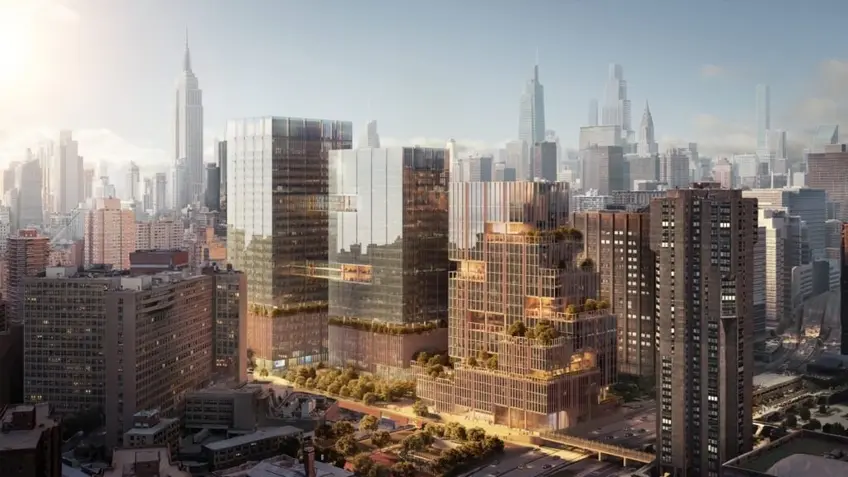 SPARC Kips Bay (NYCEDC)
SPARC Kips Bay (NYCEDC)
Updated 11/27/23 with new projects and investments
New York City is home to some of the world's top universities, hospitals, and academic medical centers, and a Department of City Planning report from June 2022 found that New York City and the surrounding region have the largest life sciences market in the country, with 30% more industry businesses and 32,000 more jobs than Boston, the next-largest market. The report notes that while the New York City metro area is home to seven percent of the U.S. population, it houses 10% of the nation's biochemists and biophysicists and 12% of the nation's chemists. It also observes that the area produces more life sciences graduates than any other leading metro area.
New York City is home to some of the world's top universities, hospitals, and academic medical centers, and a Department of City Planning report from June 2022 found that New York City and the surrounding region have the largest life sciences market in the country, with 30% more industry businesses and 32,000 more jobs than Boston, the next-largest market. The report notes that while the New York City metro area is home to seven percent of the U.S. population, it houses 10% of the nation's biochemists and biophysicists and 12% of the nation's chemists. It also observes that the area produces more life sciences graduates than any other leading metro area.
In a statement for the Department of City Planning report, Mayor Eric Adams said, “We are making the smart investments to create jobs and opportunity for New Yorkers while encouraging scientific progress that benefits people across the country and the world. But we’re not done.” We are certainly not – in October 2023, the governor, the mayor, and the Chan Zuckerberg Initiative (CZI) announced plans for the Chan Zuckerberg Biohub New York, a new biomedical research hub that will bring together experts from Columbia University, Yale University, and Rockefeller University to focus on early disease prevention, detection, and treatment. It will also focus on the creation of new technologies to detect early stages of disease in cells, and apply these approaches to notoriously hard-to-detect cancers and neurodegenerative diseases. CZI will invest $250 million into the new hub, and the New York City Economic Development Corporation (NYCEDC) and Empire State Development will each invest $10 million.
It is important to note that New York has always recognized the importance of life sciences. The LifeSci NYC initiative got its start in 2016 as a 10-year, $500 million commitment to growing the life sciences economy. Three years later, a report from Newmark Knight Frank predicted that “Life Sciences in New York City are set to emerge as an important component of the commercial real estate market in the coming years.”
However, the coronavirus pandemic drove home the importance of life sciences and spurred greater investment in them. In June 2021, when the de Blasio administration announced a plan to double LifeSciNYC's investment to $1 billion, they called it “the key to our economic and public health recovery." Venture capital funding for new life sciences businesses in the area has nearly tripled since 2015, and the city has added more than 260 life sciences research and development companies (or more than 40 percent of the region’s research and development growth) over the past decade.
Moreover, the Adams administration has expanded on the programs established under LifeSciNYC. In summer 2022, the LifeSciNYC advisory council, which dates back to 2017, was expanded with new members from academia, finance, philanthropy, and commercial real estate development. Also during this time, the Real Estate Life Sciences Advisory Board was established with a team of developers, brokers, and investors who will offer guidance on how the city’s real estate assets can be used to foster life sciences growth. Summer 2022 was also a time of great investment with awards of $15 million to the City College of New York and $11.6 million to the Mount Sinai Healthcare System so that the institutions could build new facilities that allow for the creation of life sciences startups, the connection of research to industry, and the advancement of healthcare and technology.
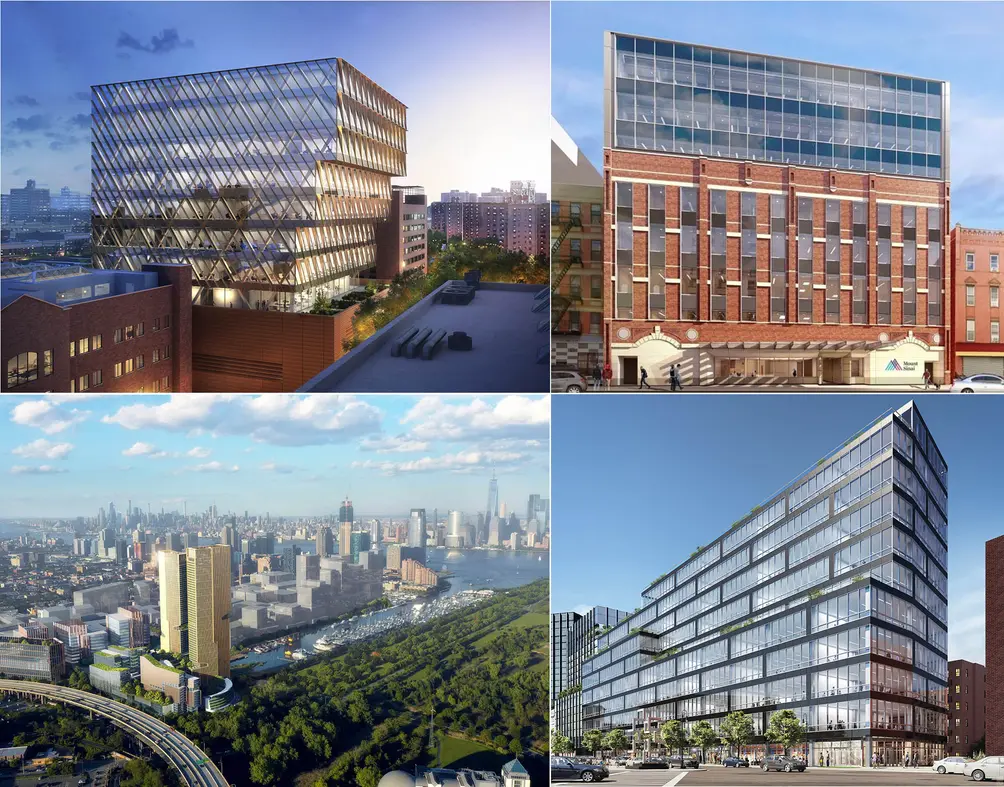 A selection of life sciences buildings on the rise in the New York area
A selection of life sciences buildings on the rise in the New York area
The Cure Building
345 Park Avenue South, Flatiron District
Developed by Deerfield Management
Design by Emery Roth & Sons
12 stories | 300,000 square feet
Reopened in 2021
345 Park Avenue South, Flatiron District
Developed by Deerfield Management
Design by Emery Roth & Sons
12 stories | 300,000 square feet
Reopened in 2021
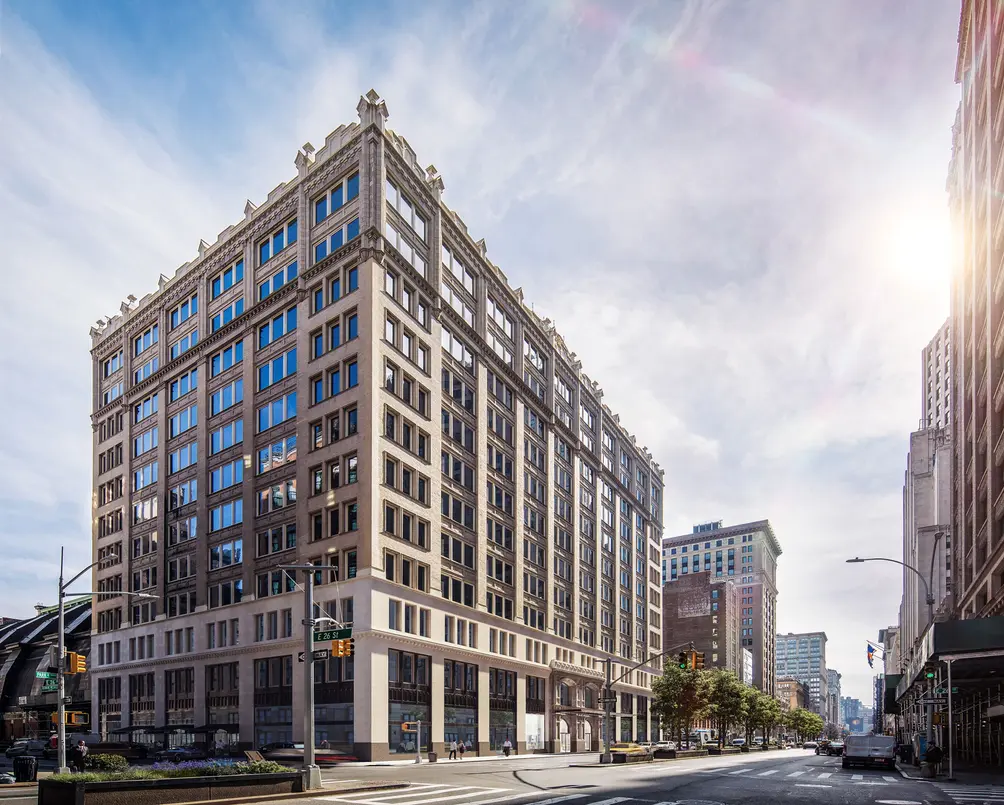 345 Park Avenue South (Deefield Management)
345 Park Avenue South (Deefield Management)
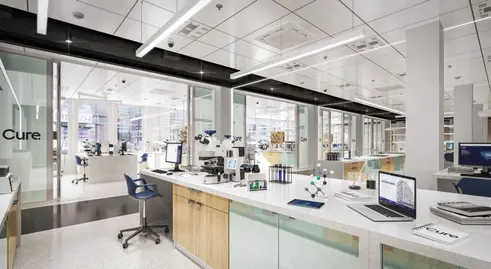

An early LifeSciNYC investment was the redevelopment of 345 Park Avenue South into a life sciences building, following the departure of its last tenant (advertising agency Digitas) and Deerfield Management's $345 million purchase of the building from RFR Realty. The building’s elevators have all been modernized, and the building has been upgraded with new utilities, a new fire suppression system, a ready to work exhaust system, high-powered generators, and custom heating and cooling.
In addition to providing move-in ready lab space for life science, digital health, and tech-enabled companies, Cure features an in-house incubator, an immersive summer internship program, and programs to narrow the gender gap in life sciences. It started out hosting virtual symposia, but later took advantage of its state-of-the-art conference and teaching center to be part of a hybrid model for presentations.
In addition to providing move-in ready lab space for life science, digital health, and tech-enabled companies, Cure features an in-house incubator, an immersive summer internship program, and programs to narrow the gender gap in life sciences. It started out hosting virtual symposia, but later took advantage of its state-of-the-art conference and teaching center to be part of a hybrid model for presentations.
Schrödinger, Inc.
1540 Broadway, Midtown West
Developed by Schrödinger Inc
Design by Emery Roth & Sons
109,000 square feet
Arrived in 2021
1540 Broadway, Midtown West
Developed by Schrödinger Inc
Design by Emery Roth & Sons
109,000 square feet
Arrived in 2021
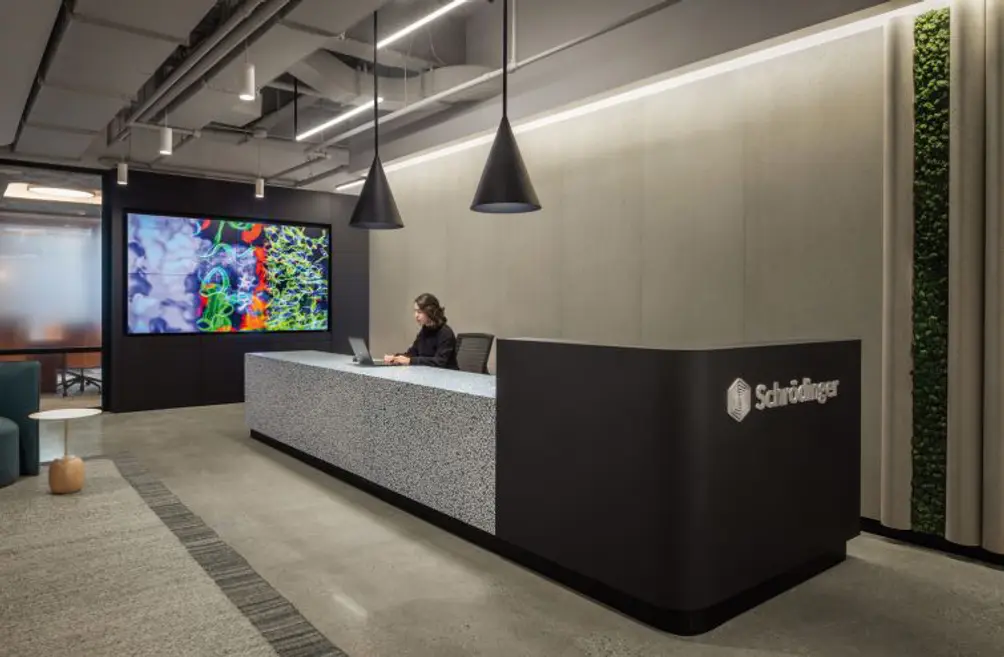
When pharmaceutical software developer Schrödinger Inc. (“Schrödinger”) signed a lease for over 100,000 square feet of office space in the heart of Times Square in spring 2021, real estate industry experts hailed it as an optimistic sign for New York’s office market. Less than two years later, in March 2023, Schrödinger announced that it was investing $7.6 million to expand its operations, lease additional space, and grow its workforce. This new venture is supported by up to $1.4 million in performance-based Excelsior Jobs Program tax credits, which encourages businesses to expand in and relocate to New York.
Schrödinger’s computational platform has been a game changer for drug discovery and developmental processes. When the expansion was announced, Governor Hochul said in a statement, “The expansion of Schrödinger's headquarters will help to ensure that the future of science and medicine is built right here in New York State.”
Schrödinger’s computational platform has been a game changer for drug discovery and developmental processes. When the expansion was announced, Governor Hochul said in a statement, “The expansion of Schrödinger's headquarters will help to ensure that the future of science and medicine is built right here in New York State.”

The Mink Building
1361 Amsterdam Avenue, Harlem
Developed and designed by Janus Property Company
5 stories | 150,000 square feet
Completed in 2021
1361 Amsterdam Avenue, Harlem
Developed and designed by Janus Property Company
5 stories | 150,000 square feet
Completed in 2021
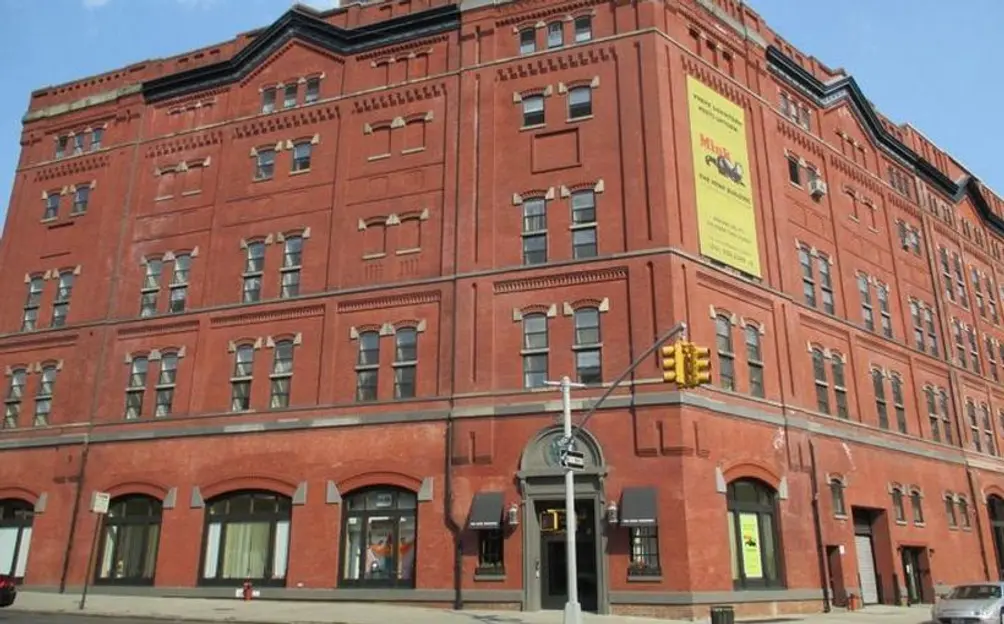
The building at 1361 Amsterdam Avenue has had a rich history as home to the Bernheimer and Schwartz Pilsner Brewing Company, the Interborough Fur Storage Company, and now an innovative commercial bioscience lab. Janus Property Company carefully restored its historic facade while transforming the interiors with state-of-the-art lab space, a chemical fume hood, a vacuum system, a gas generator for freezers, and an autoclave pressure chamber.
Anchor tenant Volastra Therapeutics researches novel approaches to cancer treatment and occupies 11,000 square feet in the building. In October 2022, Governor Hochul announced that Harlem Biospace would open its second incubator space in the building, offering affordable shared wet lab space for early stage life science companies. It is around the corner from Taystee Lab Building (see below) and a stone’s throw from Columbia University’s new Manhattanville campus.
Taystee Lab Building
450 West 126th Street, Harlem
Developed by Janus Property Group
Design by LevenBetts Architects and SLCE Architects
11 stories | 350,000 square feet
Completed in 2022
450 West 126th Street, Harlem
Developed by Janus Property Group
Design by LevenBetts Architects and SLCE Architects
11 stories | 350,000 square feet
Completed in 2022
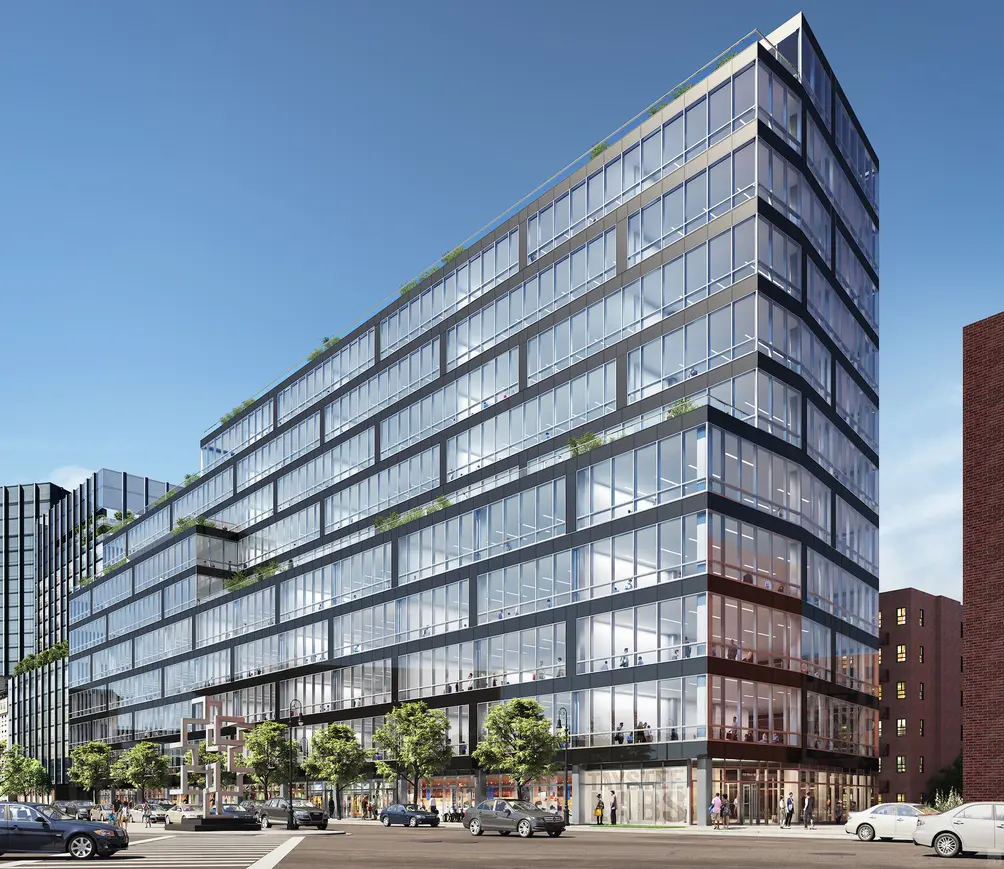 Taystee Lab Building (Janus Property Group)
Taystee Lab Building (Janus Property Group)


In March 2022, Governor Kathy Hochul was among the elected officials on hand at a ribbon-cutting ceremony for the transformation of the onetime Taystee Bakery into a state-of-the-art, LEED certified, lab-ready life sciences building. The glass and steel facade invokes the Manhattanville neighborhood's past while bringing it into the future, and its includes high capacity power, high-velocity ducts, acid waste neutralization systems, and designated locations for tenant emergency generators. Amenities include a landscaped courtyard and terraces on several floors by Terrain Work, not to mention 20,000 square feet of restaurant and retail space.
As a result of the city's investment, tenants in the building will include City College of New York. The college is using its award to establish the City Innovations Collaborative, an incubator supporting commercial and academic research under one roof. Spread over 36,000 square feet, the City Innovations Collaborative will offer early-stage life sciences companies wet and dry lab space for the development of new medications and medical devices. Not only will these address the medical needs of the surrounding community, but the collaborative itself is expected to create hundreds of life sciences jobs, fellowships, and internships.
Innolabs
45-18 Court Square West, Long Island City
Developed by King Street Properties
Design by Perkins & Will
6 stories | 267,000 square feet
Completed in 2022
45-18 Court Square West, Long Island City
Developed by King Street Properties
Design by Perkins & Will
6 stories | 267,000 square feet
Completed in 2022
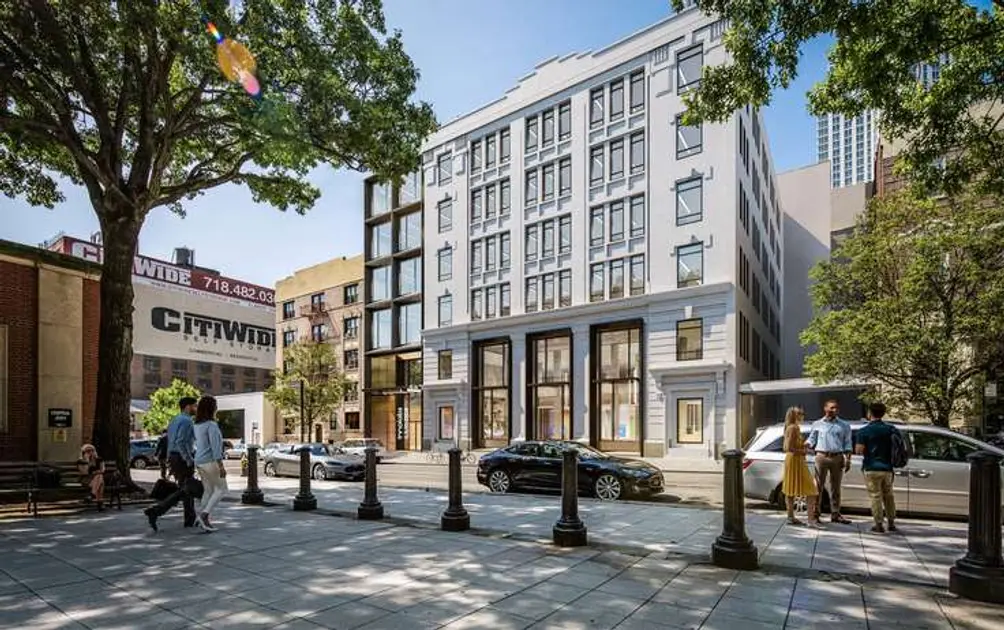 Innolabs (King Street Properties)
Innolabs (King Street Properties)
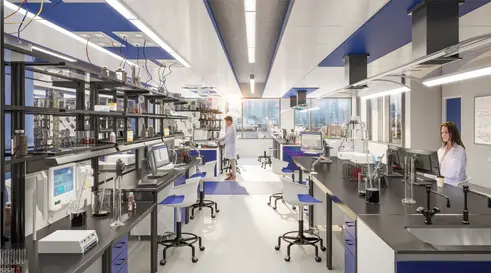
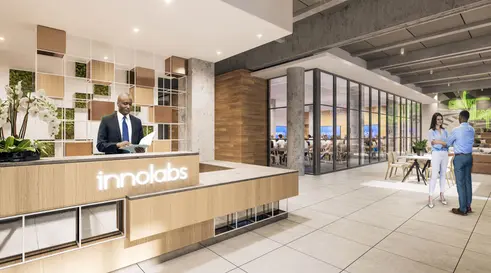
Because of its commitment to life sciences, the new Innolabs building in Long Island City was deemed essential construction at the height of the pandemic when many sites were paused. Opentrons and its two subsidiary companies, Pandemic Response Lab and Neochromosome, signed a lease for 47,790 square feet of space in September 2021, and they moved into a LEED Silver-certified building with state-of-the-art electrical, HVAC, plumbing, and security systems, not to mention such amenities as a cafe, flexible event space, bike room, and locker rooms with showers and storage. Developer King Street Properties specifically chose Long Island City for its growing supply of housing and convenient transportation access; indeed, the building is directly across the street from the Court Square subway stop.
Brooklyn Cancer Center
86 Fleet Street, Downtown Brooklyn
Developed by Red Apple Group
Design by Hill West
10,000 square feet
Completed in 2022
86 Fleet Street, Downtown Brooklyn
Developed by Red Apple Group
Design by Hill West
10,000 square feet
Completed in 2022
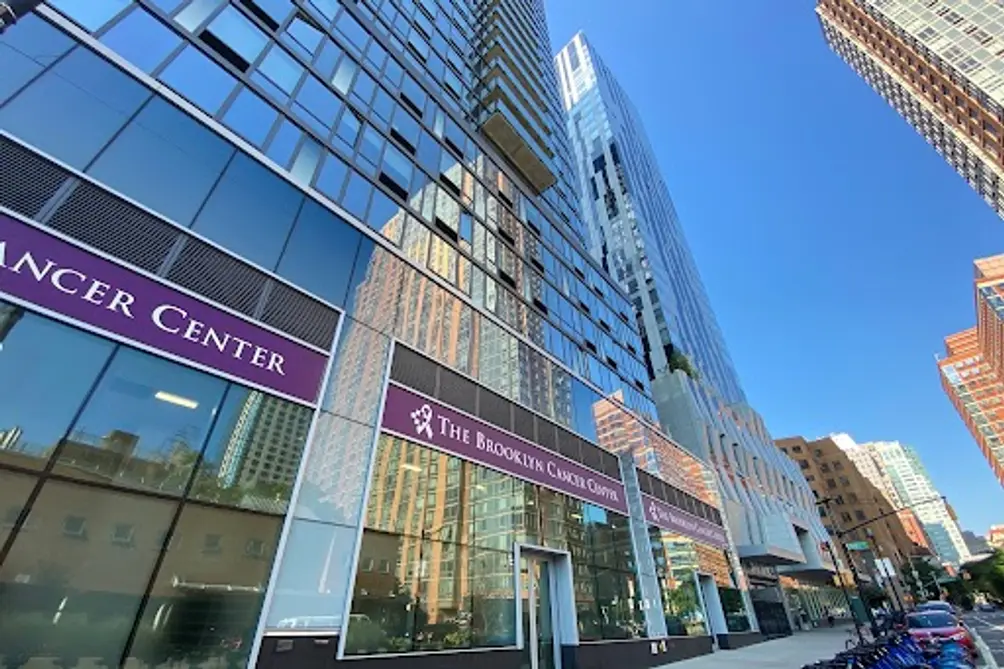 (Brooklyn Cancer Center)
(Brooklyn Cancer Center)
As one has noticed, many of New York's top medical institutions are concentrated in stretches of Kips Bay and the Upper East Side. But as of earlier this week, the opening of the Brooklyn Cancer Center means that Brooklyn patients can receive their treatment closer to home. It was established in a partnership between New York Cancer & Blood Specialists (NYCBS) and the Brooklyn Hospital Center, and is staffed by top physicians providing services for all types of cancers.
160 West 124th Street, Harlem
Developed by Harlem Park Associates LLC
Design by E4H Architecture
12 stories | 89,000 square feet
Completion estimation for Q4 2022
Developed by Harlem Park Associates LLC
Design by E4H Architecture
12 stories | 89,000 square feet
Completion estimation for Q4 2022
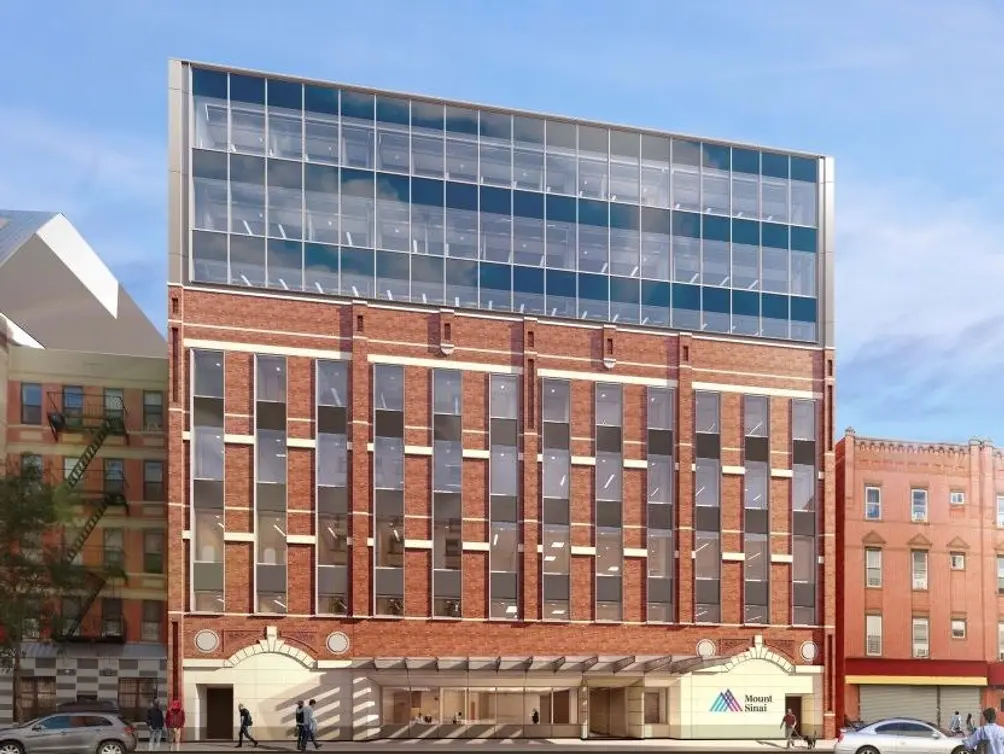 Rendering of 160 West 124th Street (Cushman & Wakefield)
Rendering of 160 West 124th Street (Cushman & Wakefield)
Following a rezoning, a four-story parking garage is being converted and expanded into a 12-story build-to-suit medical office development. Upon completion, it will serve as a wellness center as well as home to Mount Sinai's Icahn School of Medicine. When Commercial Property Executive announced a financing update, they also noted the site's proximity to 10 subway lines, 20 bus routes, and the Harlem-125th Street Metro North stop.
308 East 59th Street, Midtown East
Developer N/A
Design by IN-OA Architecture
7 stories | 17,629 square feet
Completion estimation for Q4 2023
Developer N/A
Design by IN-OA Architecture
7 stories | 17,629 square feet
Completion estimation for Q4 2023
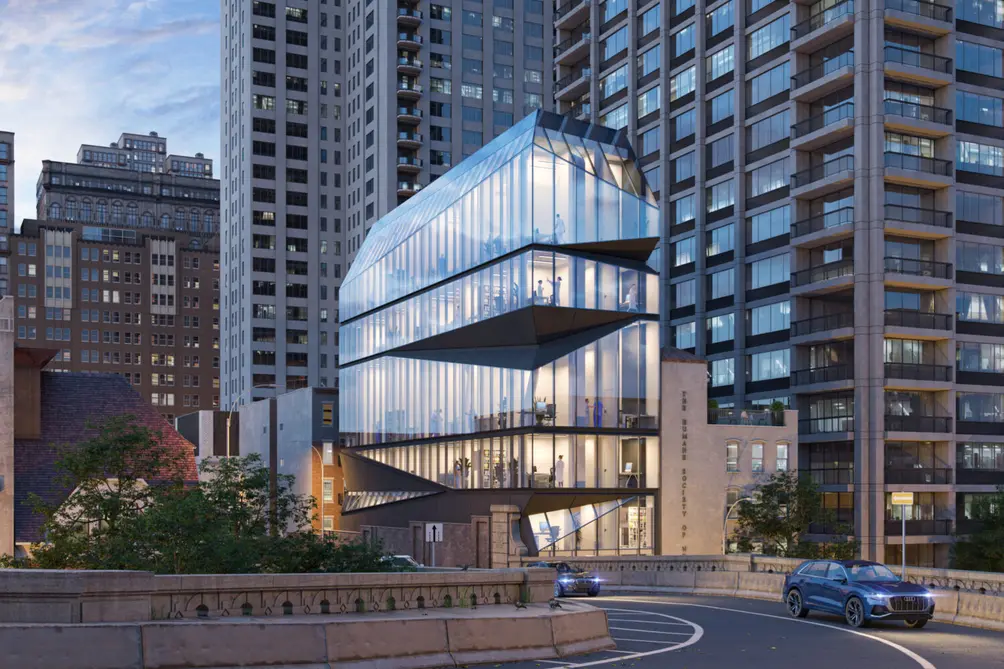 Renderings of 308 East 59th Street (IN-OA Architecture)
Renderings of 308 East 59th Street (IN-OA Architecture)
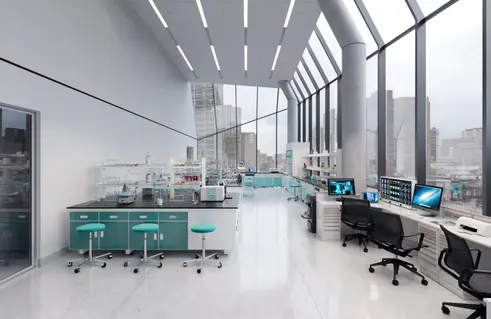

In spite of its address directly next to the onramp for the Queensboro Bridge, 308 East 59th Street has been quiet after plans to replace the three-story building with a 16-story mixed-use rental never took off. However, there were stirrings of life this spring: INOA Architecture revealed renderings of a slim seven-story building with a dashing glass facade and cantilevers to provide texture. Upon completion, it will house a mix of specialized medical spaces and outpatient medical services.
An existing three-story building will have to be demolished to make way for the new space. As the Department of Buildings, the Department of Transit, and the City Planning Commission have reportedly approved the permits, work could start as soon as this summer.
An existing three-story building will have to be demolished to make way for the new space. As the Department of Buildings, the Department of Transit, and the City Planning Commission have reportedly approved the permits, work could start as soon as this summer.

2226 Third Avenue, East Harlem
Developed by The Rinaldi Group
Design by DXA Studio
10 stories | 161,065 square feet
Completion estimation for Q4 2023/Q1 2024
Developed by The Rinaldi Group
Design by DXA Studio
10 stories | 161,065 square feet
Completion estimation for Q4 2023/Q1 2024
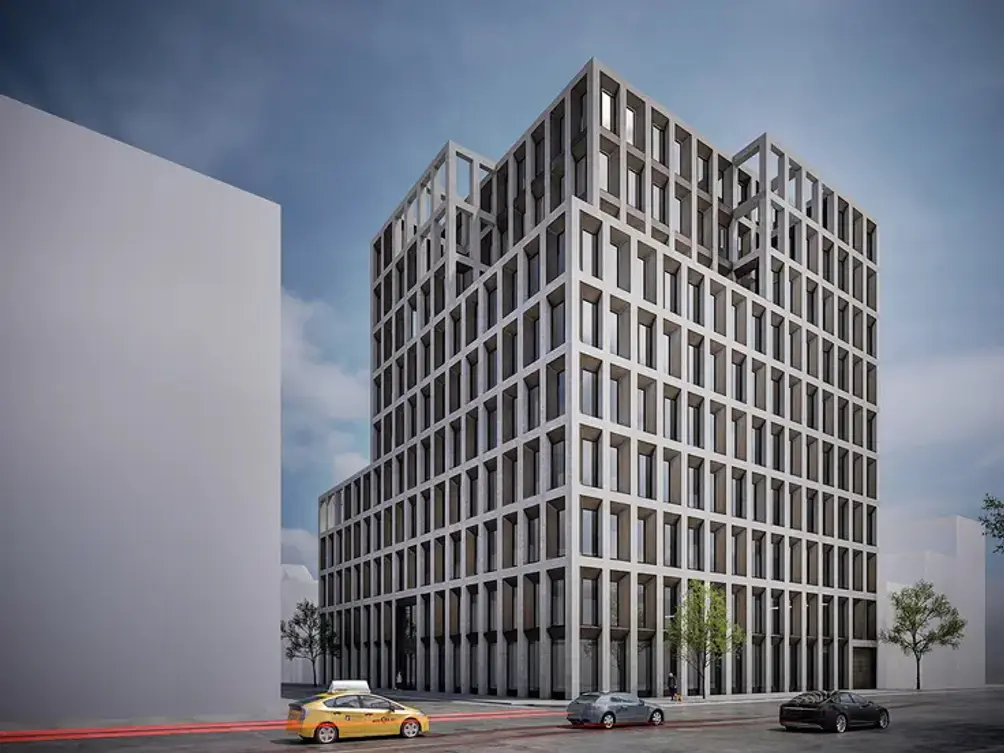 2226 Third Avenue (DXA Studio)
2226 Third Avenue (DXA Studio)
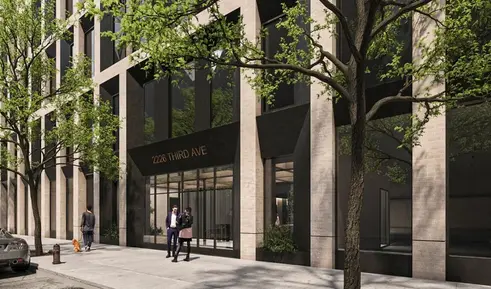
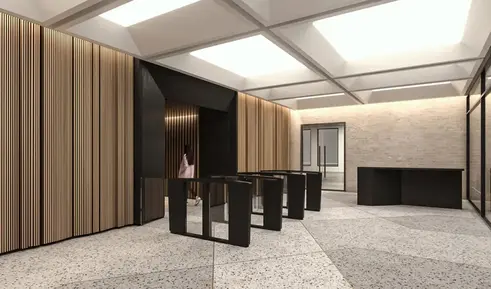
Between East 121st and 122nd Streets, a single-story building has been demolished to make way for a new life sciences building now under construction. Renderings of the 145-foot-tall building depict a gridded corium brick and metal pane facade with deeply set windows interspersed in between, as well as green roofs on setbacks and the main roof. The interiors will have the high ceilings and state-of-the-art infrastructure required for a life science building.
Alexandria Center for Life Sciences north tower
500 East 30th Street, Kips Bay
Developed by Alexandria Real Estate Equities
Design by Adamson Associates
21 stories | 416,667 square feet
Completion estimated for 2024
500 East 30th Street, Kips Bay
Developed by Alexandria Real Estate Equities
Design by Adamson Associates
21 stories | 416,667 square feet
Completion estimated for 2024
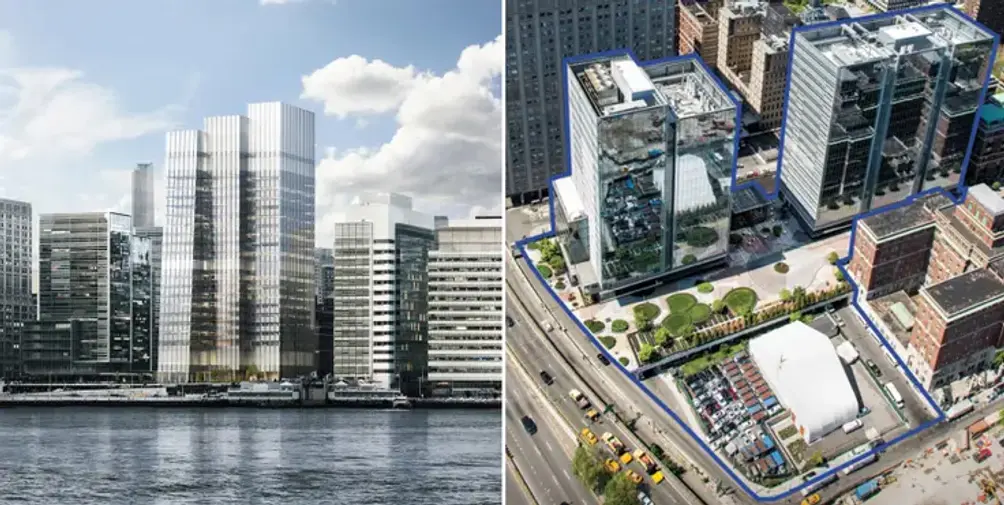 Rendering of Alexandria Center for Life Sciences (Adamson Associates Architects)
Rendering of Alexandria Center for Life Sciences (Adamson Associates Architects)
The east and west towers of the Alexandria Center for Life Sciences ("Alexandria Center"), the city's first commercial life science campus, were instrumental in New York's high rankings in life science space reports. But it is not stopping there: Permits were filed for a new tower at the northernmost end of the site in January 2020; upon completion, this will bring Alexandria Center's total of rentable laboratory and office space to over 1.1 million square feet.
The first two towers of the Alexandria Center are LEED Gold certified and Platinum-level Wired Certified, and the new tower will more than likely follow suit. Its lab and office space will be underpinned by state-of-the-art infrastructure, which includes an emergency generator for house/life safety systems. It is located in the heart of Kips Bay, which is known for its historic hospitals as well as its easy access via subway, bus, or ferry.
The first two towers of the Alexandria Center are LEED Gold certified and Platinum-level Wired Certified, and the new tower will more than likely follow suit. Its lab and office space will be underpinned by state-of-the-art infrastructure, which includes an emergency generator for house/life safety systems. It is located in the heart of Kips Bay, which is known for its historic hospitals as well as its easy access via subway, bus, or ferry.
 Area map
Area map
The Cove
Jersey City
Developed by Argent Ventures and H&R REIT
Design by Ennead Architects
3,000,000 square feet
Completion of first phase estimated for 2024
Jersey City
Developed by Argent Ventures and H&R REIT
Design by Ennead Architects
3,000,000 square feet
Completion of first phase estimated for 2024
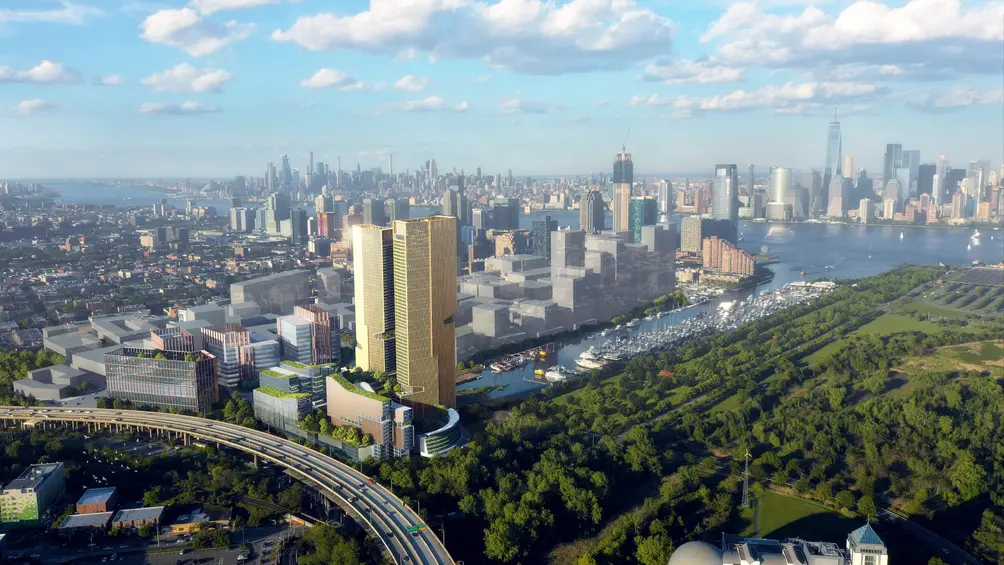 Rendering of The Cove (Argent Ventures)
Rendering of The Cove (Argent Ventures)
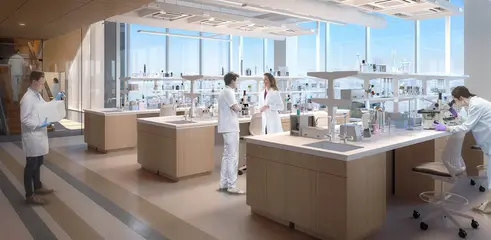
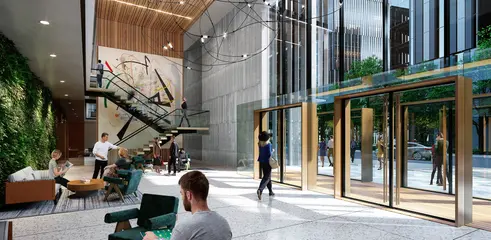
Across the river and as part of the Grand Jersey Redevelopment Plan, The Cove is set to bring a hub for science, technology, and medicine to a former brownfield site in Jersey City. In addition to new academic, laboratory, and office space, the plan calls for new retail, 1.6 million square feet of new housing units, and a new 3.5-acre public park linked to the Hudson River Waterfront Walkway.
The first phase of cleanup was completed in April 2021, and construction is set to take shape in phases. The first phase will include seven stories dedicated to life sciences and teaching uses, including lab space, office space, core facilities for various translational uses, and amenities like a digital conference center and convergence cafe; it will also include a commercial building with lab, office, and retail space. The second phase will include two laboratory and commercial buildings totaling 596,000 square feet.
With the realities of climate change in mind, the site is elevated to prevent against flooding. Other resiliency measures like a permeable natural barrier have been incorporated into the plan, which is also exploring the possibilities of solar panels, heating and cooling the buildings using combustion-free heat exchange technology, and renewable energy sources.
The first phase of cleanup was completed in April 2021, and construction is set to take shape in phases. The first phase will include seven stories dedicated to life sciences and teaching uses, including lab space, office space, core facilities for various translational uses, and amenities like a digital conference center and convergence cafe; it will also include a commercial building with lab, office, and retail space. The second phase will include two laboratory and commercial buildings totaling 596,000 square feet.
With the realities of climate change in mind, the site is elevated to prevent against flooding. Other resiliency measures like a permeable natural barrier have been incorporated into the plan, which is also exploring the possibilities of solar panels, heating and cooling the buildings using combustion-free heat exchange technology, and renewable energy sources.
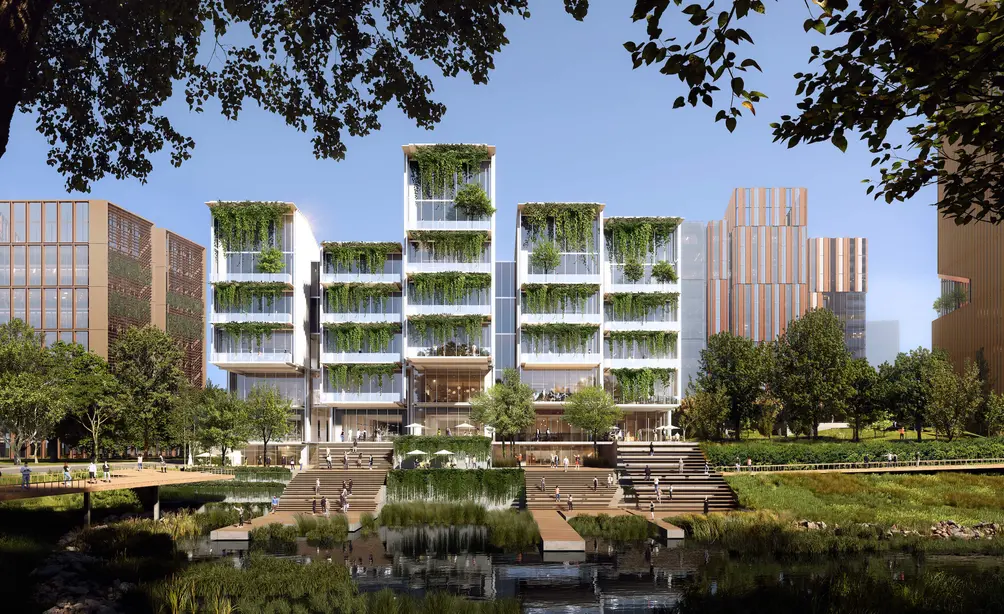 Residential component of The Cove
Residential component of The Cove
403 East 79th Street, Lenox Hill
Developed by Extell Development
Design by Perkins Eastman
30 stories | 400,000 square feet
Completion estimation for Q1 2025
Developed by Extell Development
Design by Perkins Eastman
30 stories | 400,000 square feet
Completion estimation for Q1 2025
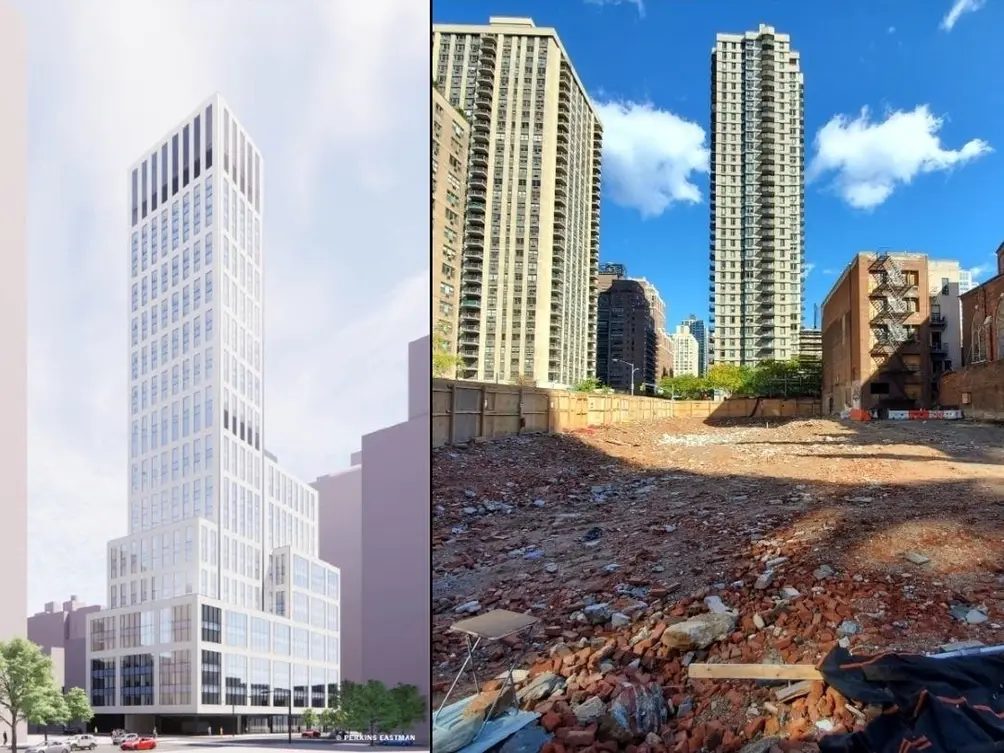 403 East 79th Street (Perkins Eastman Architects)
403 East 79th Street (Perkins Eastman Architects)
Construction has just commenced on 403 East 79th Street, a new life sciences building on the east side of First Avenue. Extell chairman Gary Barnett had once speculated that his firm's site would include housing and a new school, but this project is set to be entirely medical offices. The Hospital for Special Surgery has already signed on as anchor tenant with 200,000 square feet of space across the lower eight floors (h/t New York Post), and the upper levels will be marketed to other medical offices. Oversized windows were always part of the plan, as seen in renderings, and the project will also feature such post-pandemic enhancements as increased ventilation and enhanced filtration. Patch noted that unlike other proposed Upper East Side healthcare facilities (see below), a rezoning is not required for this project, allowing for a smoother start to construction.
New York City Public Health Laboratory
22 West 137th Street, Harlem
Developed by NYC Department of Health and Mental Hygiene
Design by Skidmore Owings & Merrill
10 stories | 240,000 square feet
Completion estimated for 2026
22 West 137th Street, Harlem
Developed by NYC Department of Health and Mental Hygiene
Design by Skidmore Owings & Merrill
10 stories | 240,000 square feet
Completion estimated for 2026
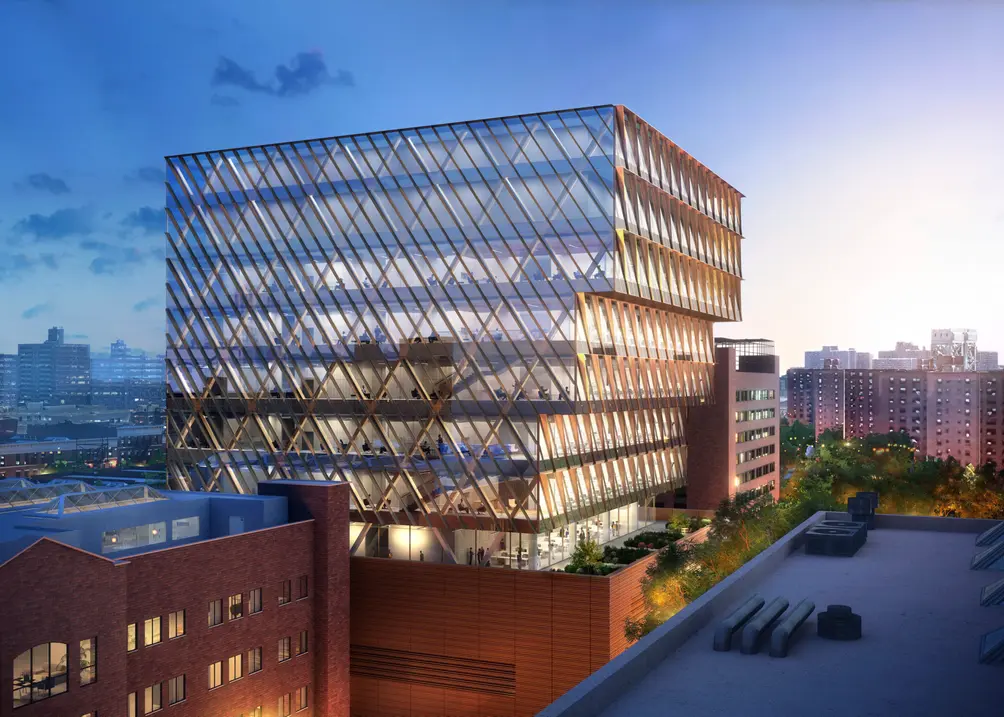 Renderings of the New York City Public Health Laboratory (Skidmore Owings & Merrill)
Renderings of the New York City Public Health Laboratory (Skidmore Owings & Merrill)
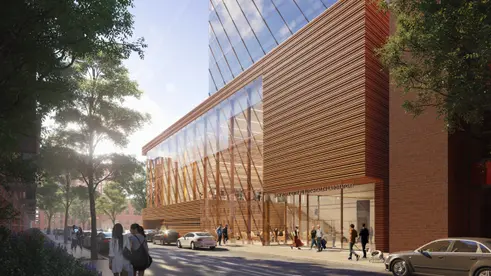
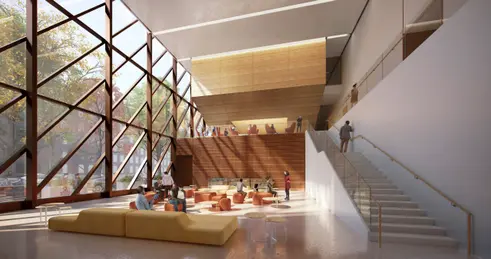
The New York City Public Health Laboratory was established during a diphtheria outbreak in 1892, and its work remains as crucial as ever in the age of Covid and Mpox. With that in mind, a groundbreaking ceremony for a new, state-of-the-art facility next to the Harlem Hospital Center took place in July 2022. With its stepped facade and glass and metal-clad volume on top of a masonry-clad podium, it's little wonder the design was among the winners of the Public Design Commission's 39th Annual Awards for Excellence in Design. Construction topped out earlier this year.
The new building is targeting LEED certification, and is well on track to meet that goal with such components as ultra-efficient laboratory equipment, solar photovoltaic panels, chilled beams, and a cogeneration plant. In response to the realities of climate change, all critical building systems will be above the current 100-year flood plain. Moreover, the building is a participant in the city’s 80x50 program, which is committed to achieving an 80 percent carbon emissions reduction by the year 2050.
The new building is targeting LEED certification, and is well on track to meet that goal with such components as ultra-efficient laboratory equipment, solar photovoltaic panels, chilled beams, and a cogeneration plant. In response to the realities of climate change, all critical building systems will be above the current 100-year flood plain. Moreover, the building is a participant in the city’s 80x50 program, which is committed to achieving an 80 percent carbon emissions reduction by the year 2050.
Center East
310 East 76th Street, Lenox Hill
Developed by New York Blood Center and Longfellow Real Estate Partners
Design by Ennead Architects
13 stories | 527,000 square feet
Completion estimated for 2026
310 East 76th Street, Lenox Hill
Developed by New York Blood Center and Longfellow Real Estate Partners
Design by Ennead Architects
13 stories | 527,000 square feet
Completion estimated for 2026
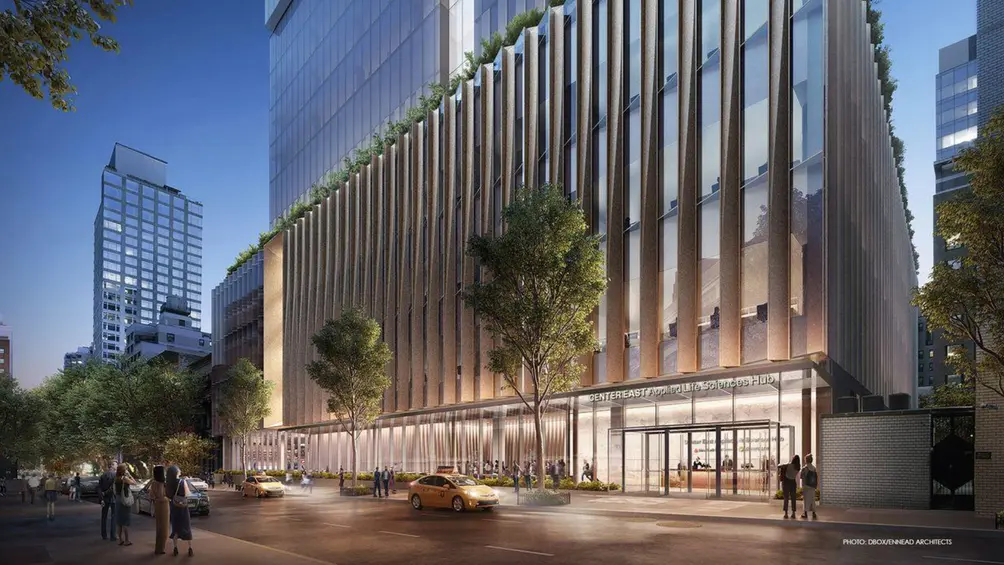 Rendering of Center East (DBOX/Ennead Architects)
Rendering of Center East (DBOX/Ennead Architects)
The New York Blood Center provides up to 90% of New York's blood supply, yet its current three-story brick headquarters are not up to the standards it would prefer. For that reason, it unveiled plans for a gleaming high-rise to be dubbed Center East. The New York Blood Center will be the anchor tenant on the first five floors, where it will continue its its work of providing blood products to New York hospitals and developing treatments and vaccines for ailments like HIV and sickle-cell disease. The rest of the building will be leased to life science companies.
The project had the support of the de Blasio administration and then-Manhattan Borough President Gale Brewer, but the board of the condominium next door opposed the new tower on grounds that it is too high for the neighborhood, that it would cast shadows on the nearby St. Catherine's Park, and for fear of the microbes and pathogens to be studied in the laboratory space. Former Council Member Ben Kallos, who represented the district where it would be built, was particularly opposed to the height of the tower.
However, the required rezoning was ultimately approved in November 2021. Most recently, a Manhattan judge dismissed the condo board's lawsuit, saying there was no basis for their complaint of illegal rezoning and that the expanded center would be of great benefit to the community. Groundbreaking is estimated for later this year.
The project had the support of the de Blasio administration and then-Manhattan Borough President Gale Brewer, but the board of the condominium next door opposed the new tower on grounds that it is too high for the neighborhood, that it would cast shadows on the nearby St. Catherine's Park, and for fear of the microbes and pathogens to be studied in the laboratory space. Former Council Member Ben Kallos, who represented the district where it would be built, was particularly opposed to the height of the tower.
However, the required rezoning was ultimately approved in November 2021. Most recently, a Manhattan judge dismissed the condo board's lawsuit, saying there was no basis for their complaint of illegal rezoning and that the expanded center would be of great benefit to the community. Groundbreaking is estimated for later this year.
SPARC Kips Bay
425 East 25th Street, Kips Bay
Developed by NYCEDC and CUNY
Designer TBA
1,500,000 square feet
Completion estimated for 2031
425 East 25th Street, Kips Bay
Developed by NYCEDC and CUNY
Designer TBA
1,500,000 square feet
Completion estimated for 2031
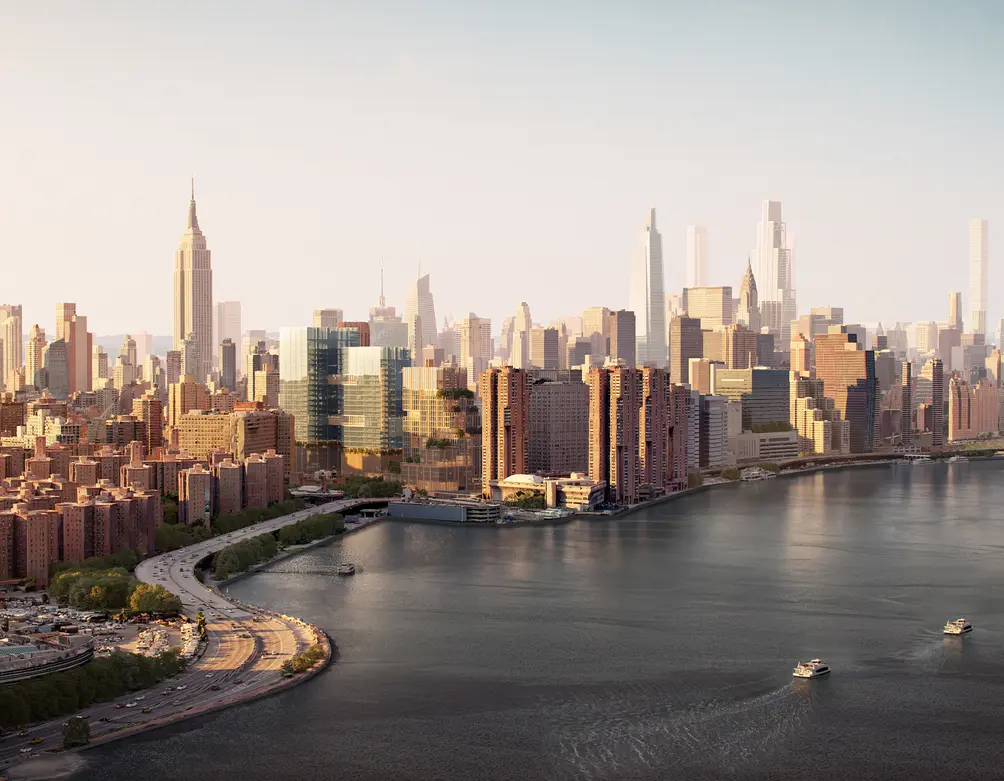
In October 2022, Governor Hochul and Mayor Adams announced plans for Science Park and Research Campus (SPARC) Kips Bay, a full block life sciences hub to take shape on the existing CUNY Hunter College Brookdale Health Science Center on a full block along First Avenue. More recently, they released the master plan and issued a request for proposals for design of public space, community infrastructure, and a pedestrian bridge for the project’s first phase.
SPARC Kips Bay will be anchored by new, modern facilities for the Hunter College School of Nursing and School of Health Professions, CUNY’s Graduate School of Public Health and Health Policy, and the Borough of Manhattan Community College’s Health Programs. It will also features a NYC Health + Hospitals/Bellevue ambulatory care center, a new simulation training center, a new forensic pathology center set to be a nation-leading training facility, a new public high school providing hands-on healthcare education, and new office space, wet and dry lab space, and translational research facilities. Moreover, the project seeks to turn a formerly impermeable block into interconnected buildings with widened sidewalks, improved access, public green space, and food and retail space at base level.
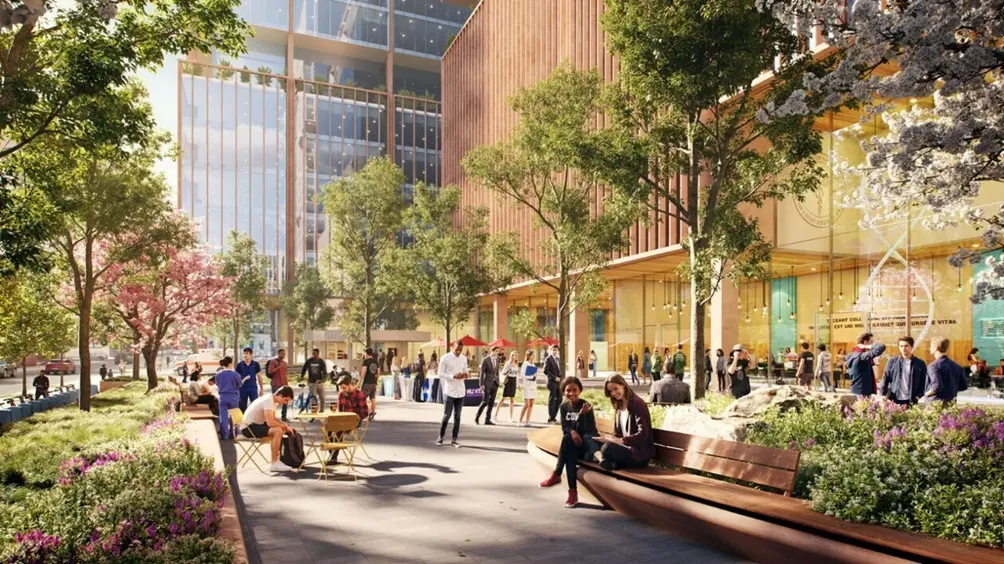
There is expected to be much news on SPARC Kips Bay in the coming months. In early 2024, NYCEDC is expected to release a request for expressions of interest from academic, research, and other consortia to establish a Tech Forward Life Sciences Center at SPARC Kips Bay. The project is expected to enter into the city’s Uniform Land Use and Review Procedure in spring 2024, and could break ground as soon as late 2025.

Mount Sinai Comprehensive Center for Surgical Innovation
432 West 58th Street, Midtown West
Developed by Mount Sinai Health System
Designer TBA
11 stories | 172,000 square feet
Completion TBA
432 West 58th Street, Midtown West
Developed by Mount Sinai Health System
Designer TBA
11 stories | 172,000 square feet
Completion TBA
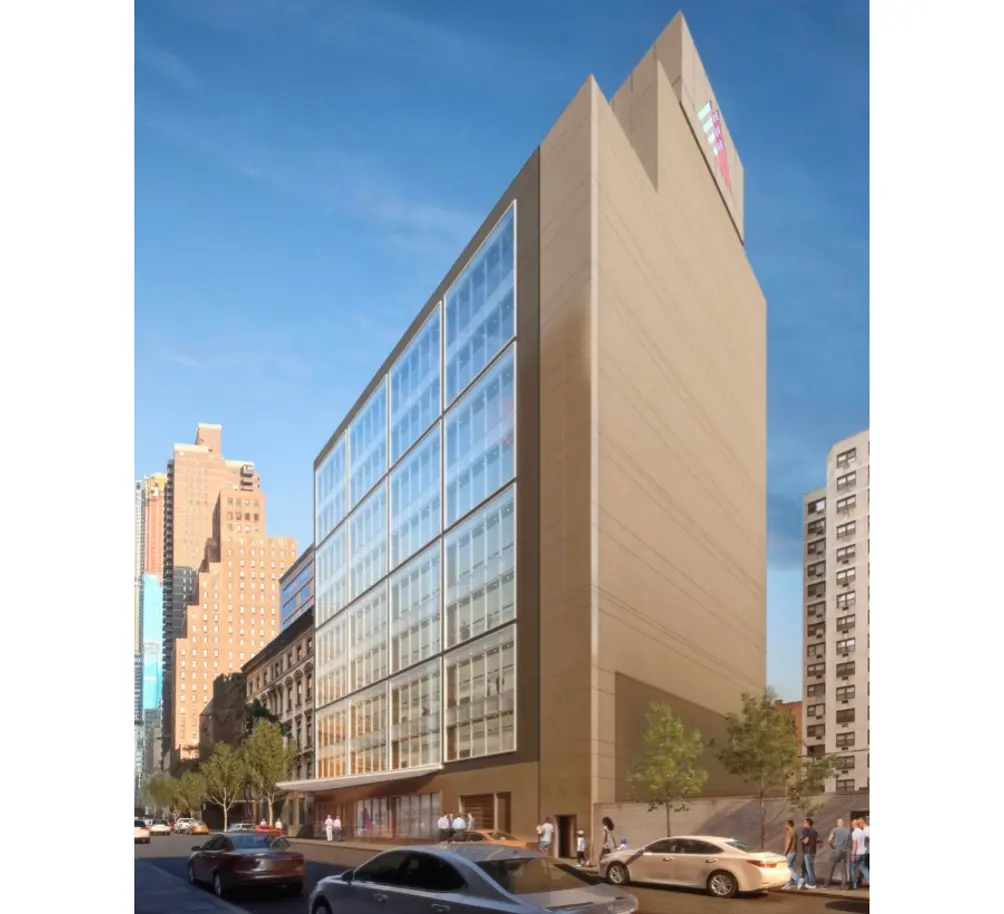 Rendering of Mount Sinai’s Comprehensive Center for Surgical Innovation (Mount Sinai Health System)
Rendering of Mount Sinai’s Comprehensive Center for Surgical Innovation (Mount Sinai Health System)
After being awarded a multi-million-dollar investment from LifeSciNYC, Mount Sinai announced that it would use the money to create the Comprehensive Center for Surgical Innovation ("the Center"), one of the only medical device prototyping facilities in the nation. It will occupy 7,000 square feet in a new, state-of-the-art building just steps from the Mount Sinai West hospital campus. The Center is set to expand on the activities of Mount Sinai Biodesign (the healthcare system's device incubator) and focus on the development of technologies and instrumentation that will enhance the quality and efficacy of surgical procedures.
The New York Life Sciences and Biotechnology Center
708 First Avenue, Turtle Bay
Developed by Solow Realty & Development
Design by Skidmore Owings & Merrill
35 stories | 1,350,000 square feet
Completion TBA
708 First Avenue, Turtle Bay
Developed by Solow Realty & Development
Design by Skidmore Owings & Merrill
35 stories | 1,350,000 square feet
Completion TBA
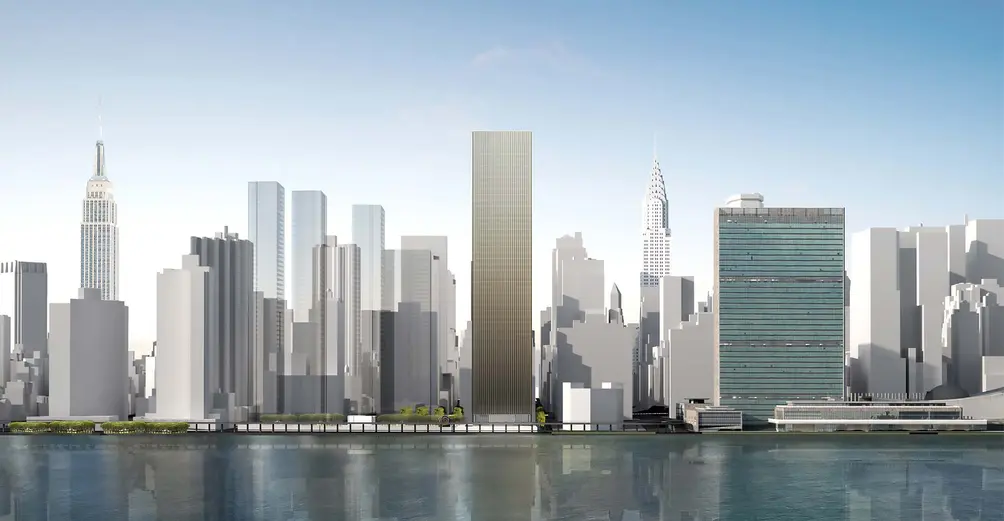 Rendering of 708 First Avenue (Solow Realty & Development)
Rendering of 708 First Avenue (Solow Realty & Development)
In July 2017, Solow Realty & Development unveiled plans for a massive new life science and biotechnology center as part of its Turtle Bay South master plan for a former Con Edison site between East 40th and 41st Streets. The new facility will feature wet and dry laboratory space as well as build to suit class A offices. It will also possibly include business accelerator or incubator program to provide seed financing for early stage life sciences and biotechnology companies. Amenities are set to include conference rooms, fitness center, restaurants, and other common spaces.
In a 2018 profile of Sheldon Solow and his son, Stefan Soloviev, The New York Times noted that the master plan that includes the new building was approved a decade ago. However, when Mr. Solow died in 2020, his obituary said that construction had not yet begun, and the developer's website does not list this project. The project's website is still live, but the site has garnered more attention as of late for Mr. Soloviev's pledge to include affordable housing in the plan if his firm gets a coveted casino license.
In a 2018 profile of Sheldon Solow and his son, Stefan Soloviev, The New York Times noted that the master plan that includes the new building was approved a decade ago. However, when Mr. Solow died in 2020, his obituary said that construction had not yet begun, and the developer's website does not list this project. The project's website is still live, but the site has garnered more attention as of late for Mr. Soloviev's pledge to include affordable housing in the plan if his firm gets a coveted casino license.
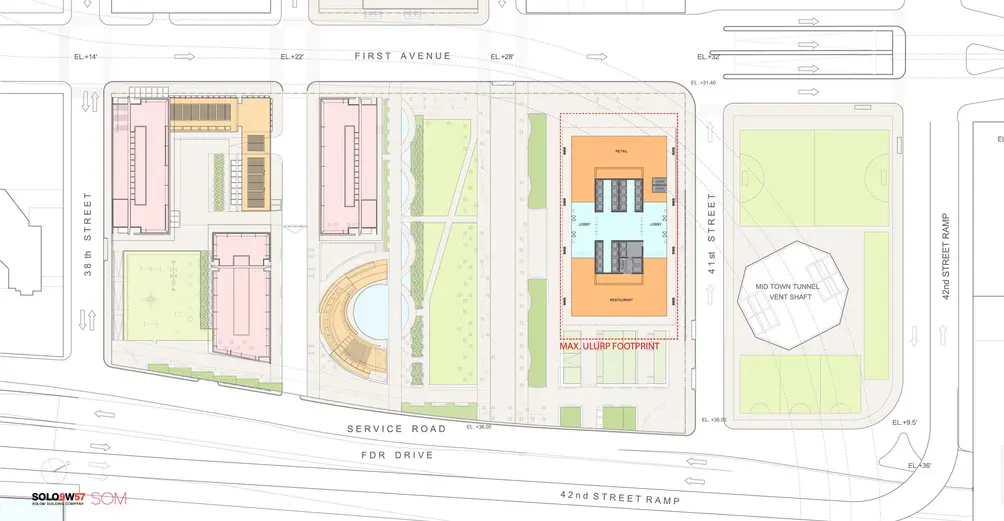 Master plan map
Master plan map
Lenox Hill Hospital expansion
100 East 77th Street, Lenox Hill
Developed by Northwell Health
Design by Ennead Architects
26 stories | 1,300,000 square feet
Completion TBA
100 East 77th Street, Lenox Hill
Developed by Northwell Health
Design by Ennead Architects
26 stories | 1,300,000 square feet
Completion TBA
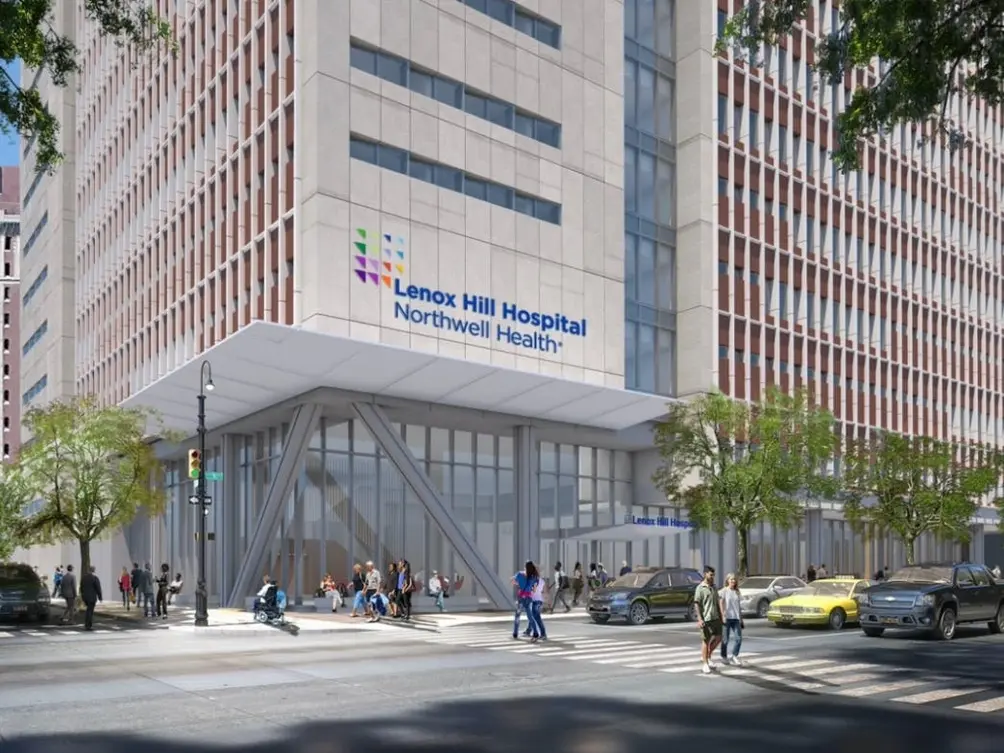 Rendering of Lenox Hill Hospital expansion (Northwell Health)
Rendering of Lenox Hill Hospital expansion (Northwell Health)
The nationally ranked Lenox Hill Hospital has been an Upper East Side mainstay since it opened in 1857, and an expansion has long been in the works. In June 2019, it unveiled a new plan calling for larger service departments, more beds to be arranged in single-patient rooms, more operating rooms, shared community space, a dedicated "mother-baby" wing to accommodate growing families, and a 490-foot-tall condo tower to offset the building's costs.
Local preservationists called the buildings "out of character" for the area and accused the hospital of prioritizing medical tourism over affordable healthcare with the expansion. A revised plan dropped the condo tower and reduced the size of the hospital tower, but locals were still unmoved. Northwell Health, which owns Lenox Hill Hospital, does not appear likely to give up on this – a spokesperson says the pandemic has made it clear that the hospital needs to expand.
Local preservationists called the buildings "out of character" for the area and accused the hospital of prioritizing medical tourism over affordable healthcare with the expansion. A revised plan dropped the condo tower and reduced the size of the hospital tower, but locals were still unmoved. Northwell Health, which owns Lenox Hill Hospital, does not appear likely to give up on this – a spokesperson says the pandemic has made it clear that the hospital needs to expand.
 Revised expansion
Revised expansion
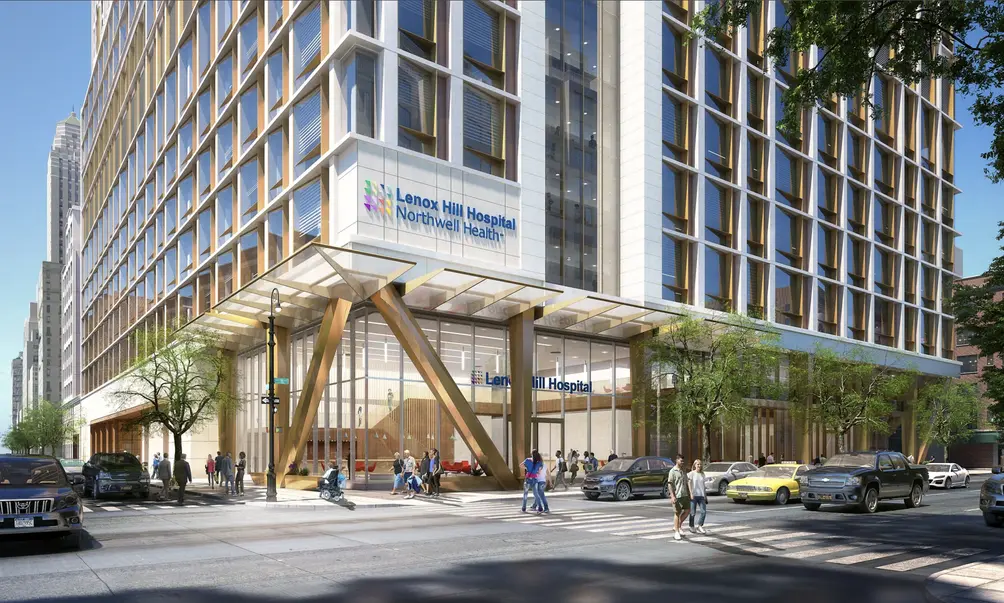 Previous rendering (Northwell Health)
Previous rendering (Northwell Health)
219 East 42nd Street, Midtown East
Developed by David Werner, Deutsche Bank Asset Management, and Alexandria Real Estate Equities
Designer TBA
33 stories | 1,000,000 square feet
Completion TBA
Developed by David Werner, Deutsche Bank Asset Management, and Alexandria Real Estate Equities
Designer TBA
33 stories | 1,000,000 square feet
Completion TBA
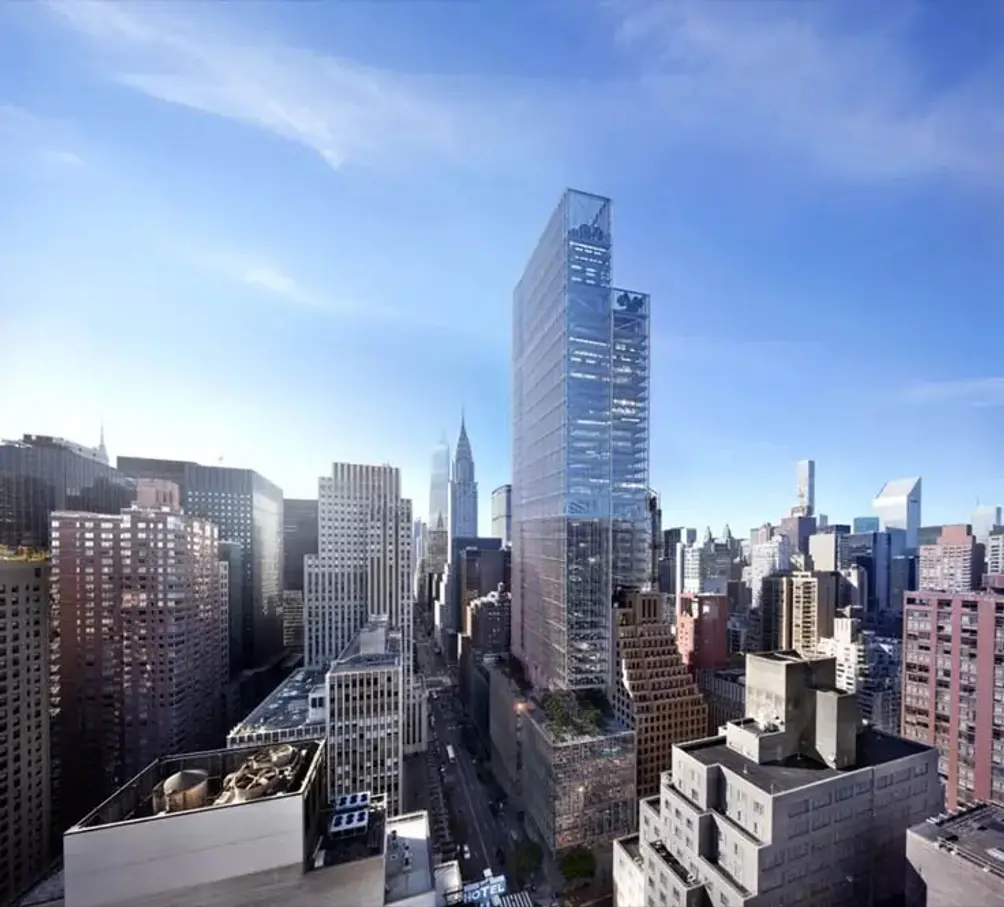 Rendering of new building at 219 East 42nd Street (MOTIV Studio)
Rendering of new building at 219 East 42nd Street (MOTIV Studio)
After pharmaceutical powerhouse Pfizer announced that it would be moving to new headquarters at The Spiral in Hudson Yards, they sold their building for approximately $360 million. The consortium has plans to redevelop it into another building that will cater to life sciences and technology firms, and the Midtown East rezoning allows them to replace it with a significantly larger building. Renderings of a possible replacement were unveiled in August 2018, but demolition and construction will not be able to start until Pfizer has moved out.

 6sqft delivers the latest on real estate, architecture, and design, straight from New York City.
6sqft delivers the latest on real estate, architecture, and design, straight from New York City.
